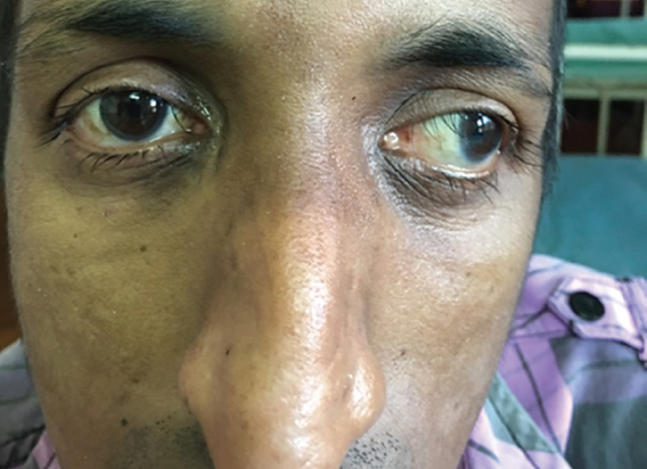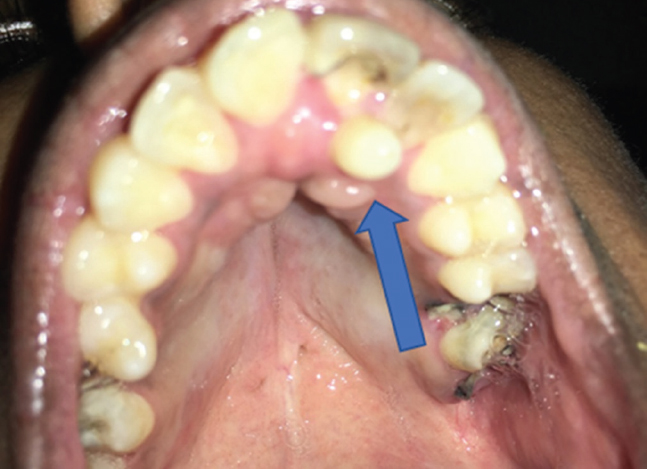Translate this page into:
Rubinstein–Taybi syndrome
*For correspondence: drpetergeorge2002@yahoo.com
-
Received: ,
This is an open access journal, and articles are distributed under the terms of the Creative Commons Attribution-NonCommercial-ShareAlike 4.0 License, which allows others to remix, tweak, and build upon the work non-commercially, as long as appropriate credit is given and the new creations are licensed under the identical terms.
This article was originally published by Wolters Kluwer - Medknow and was migrated to Scientific Scholar after the change of Publisher.
A 26 yr old male† presented to the Medicine outpatient department, Father Muller Medical College and Hospital, Mangaluru, in September 2018. A third child, born to non-consanguineous parents with 'Rubinstein–Taybi syndrome' or 'broad thumb-hallux syndrome', he presented with complaints of fever and headache but his vitals were stable. He had mental retardation (IQ <70), divergent squint and prominent beaked nose (Fig. 1), crowded teeth, talon cusps of incisors (Fig. 2), high-arched palate, broad thumbs, broad great toes, platonychia, clinodactyly, polydactyly (Fig. 3) and kyphosis, all features suggestive of Rubinstein–Taybi syndrome. He had neutrophilic leucocytosis and thrombocytosis with a hypoplastic bone marrow. Investigations done to rule out haematological malignancies, cardiac structural/conduction defects, neuro-malignancies and skin disorders were unyielding. Blood and urine culture were negative. The patient was started on empirical treatment with intravenous antibiotics for seven days and his fever subsided. This case is reported to emphasize the importance of identifying rare syndromes, especially the inherited ones, to facilitate genetic counselling in such families.

- Divergent squint refers to an eye that turns or diverges outwards.

- Talon cusp is an extra cusp on an anterior tooth (arrow).

- Polydactyly, an extra toe on the right foot.
Conflicts of Interest: None.





